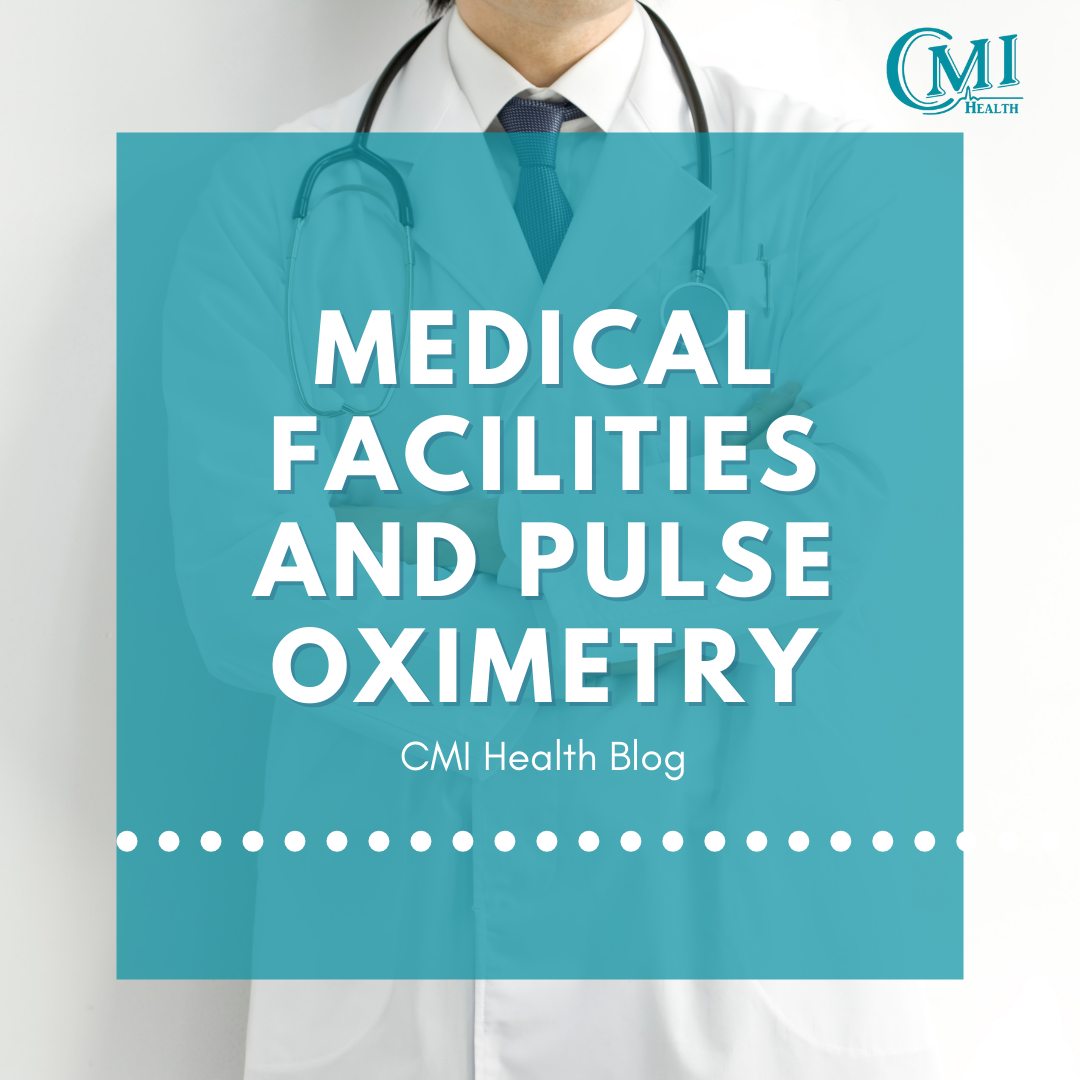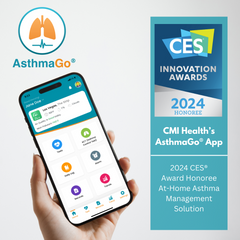Your cart is empty now.

Medical Facilities and Pulse Oximetry | CMI Health
Importance of Pulse Oximetry
Pulse Oximetry is a quick, effective, and non-invasive method of measuring a patient's pulse rate and blood oxygen concentration (SpO2). These values are incredibly important to patient care as they provide doctors with vital information regarding the patient's overall health and lung function. Pulse oximeters specifically measure the percentage of oxygen-bound hemoglobin present in arterial blood (oxygenated blood) (Fink, 2021). Lower than normal SpO2 levels suggest the patient is not receiving enough oxygen, a critical variable necessary for efficient bodily function (Fink, 2021).
Due to its importance in determining patient health, oxygen saturation is now considered to be one of the 5 most important patient vital signs (Early Sense, 2021).
Medical Facilities and Pulse Oximetry
Given the necessity of oxygen to bodily function, medical facilities monitor oxygen saturation consistently as a way of determining patient health. Pulse oximeters used in professional healthcare settings are prescription level medical instruments that have undergone rigorous clinical testing to ensure the device is accurate (Fink, 2021). These oximeters often cost thousands of dollars and are only sold to medical professionals who are trained to use them properly.
For Emergency Medical Technicians (EMTs) and nurses, such oximeters are mandatory equipment used to evaluate incoming patients. In urgent situations, pulse oximeters allow EMTs to determine if a patient is hypoxic and requires immediate intubation (Page, 2017). During an emergency, being able to determine what the patient needs in a short amount of time can be the difference between life and death, hence the necessity of such medical equipment.
Both traveling and in-clinic nurses and physicians use pulse oximetry to monitor and evaluate the effectiveness of oxygen therapy (Myatt, 2017). For those recovering from illness (such as COVID-19 or pneumonia) or dealing with chronic lung disease, physicians use oximetry to evaluate lung function over time to diagnose and make necessary changes to daily treatment.
At-Home Pulse Oximetry in Comparison
For many users, understanding and tracking oxygen saturation and pulse rate is essential for better understanding chronic illnesses such as COPD and Asthma. Though professional devices are often too costly or unattainable due to a prescription requirement, there are clinical-grade instruments available for at-home use. CMI Health offers a range of FDA Cleared, portable pulse oximeters. It is important that at-home users purchase oximeters that have been FDA cleared as these devices have been approved through standards that were created to protect users and require medical device companies to manufacture and distribute equipment that is consistent, reliable, and safe. For more information on the importance of purchasing quality at-home pulse oximeters, click here!
Still have questions? Contact us at info@cmihealth.com or call our customer service hotline at 888-985-1125 (ext. 1).



